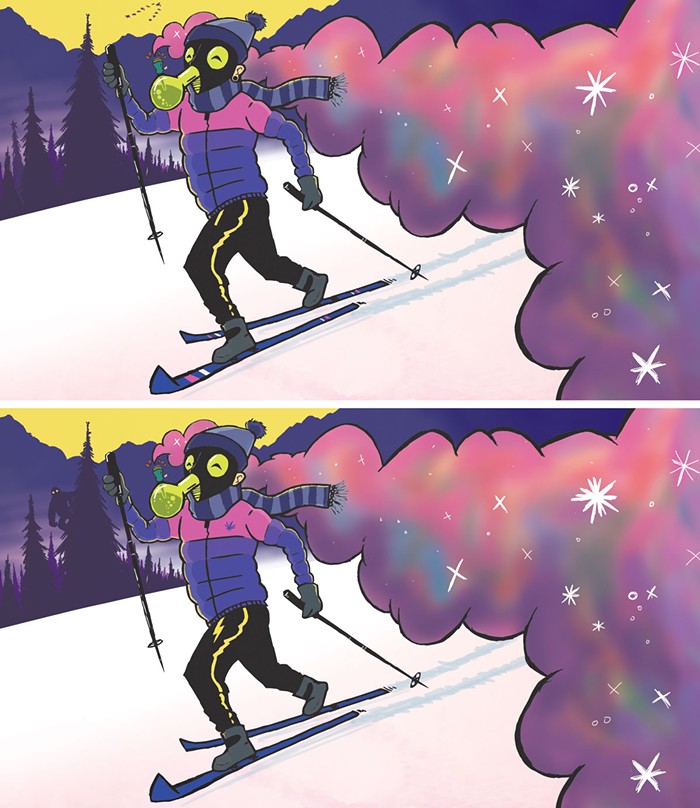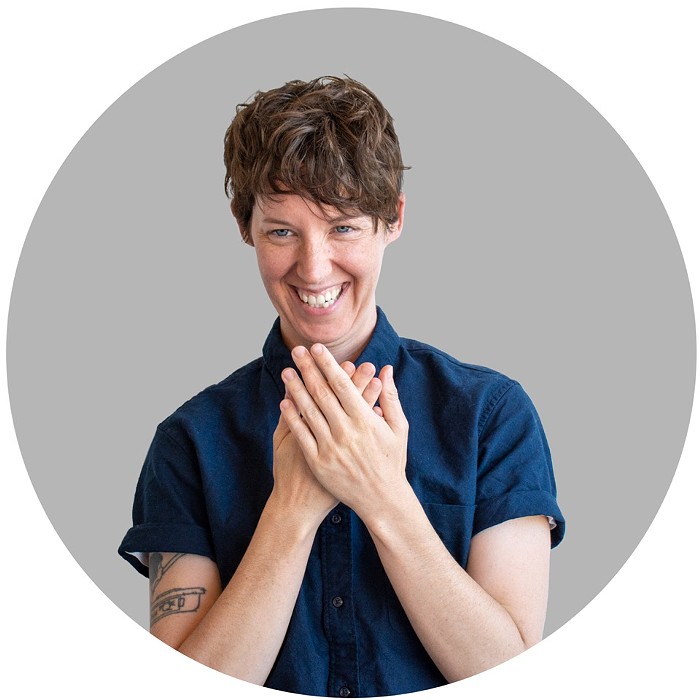These days, cross-country skiing is a leisure sport for people who enjoy both frozen toes and sweating, but it's been around forever. A 4,500-year-old ski was discovered by archaeologists in Sweden, and rock drawings depicting human figures on skis go back even longer. It's not hard to see why this activity would have arisen from the brains of humankind: Have you tried walking in knee-deep snow? That shit is hard! Far better to strap some planks to your feet and glide along.
That does not mean cross-country skiing is easy: If downhill skiing is for people who enjoy pleasure, cross-country skiing is for those who tolerate pain. Without gravity to help you go, you have to do most of the work yourself. Gliding only gets you to the first slight incline, at which point your calves and quads will have to take over.
But cross-country skiing is much safer to combine with weed than downhill skiing, no matter what my colleague Lester Black says. (In our High-brr-nation Issue last year, he recommended snowboarding while high, which I think is a perfect recipe for breaking your neck.) As for cross-country skiing, I recommend consuming 10 to 50 milligrams of THC, which doesn't make cross-country skiing any easier, but it will make your calves and quads hurt slightly less.
There are two kinds of cross-country skiing: classic and skate, according to Rune Harkestad, president of Washington's Kongsberger Ski Club. Harkestad, a Norwegian native who says he learned to ski almost as soon as he learned to walk, recommends starting with classic, which has a far easier learning curve than skate skiing. Classic is basically like walking, whereas skate skiing is more like the motion of ice-skating with the aerobic effort of long-distance running.
The skate skiing technique isn't exactly natural, which I discovered last year when my girlfriend—an Alaskan who grew up on skis—picked up a couple pairs of skate skis at a swap meet, took me to some groomed trails off Interstate 90, said it was "just like Rollerblading," and skied off into the distance as I tried to remember how to Rollerblade. I spent the next few hours awkwardly duck-walking through the snow, consuming THC, and cursing my girlfriend. After many repeated efforts—and watching how-to-skate-ski videos at home—I finally got it. It's not anything like Rollerblading, but if done right, skate skiing can be almost as fun as downhill skiing.
"When you get the hang of skating, it can be pretty fast, flying through the woods on skate skies," Harkestad says. It's also beautiful, serene, and a hell of a lot cheaper than a lift ticket. While downhill skiing could cost you hundreds of dollars for an afternoon at one of the local resorts, once you have a pair of cross-country skis (easy to find at used sports equipment stores or garage sales around Seattle, as well as rental shops like Ascent Outdoors or REI), it's basically free to do on public lands (although you will need a Sno-Park Permit to park).
In our state, Leavenworth, Plain, Wenatchee, and the Methow Valley are particularly known for cross-country skiing. But if you're coming from the Seattle area, there are two prime spots just around an hour away: Hyak (the Sno-Park at Snoqualmie Summit) and Cabin Creek, a snow-covered road at exit 63 off I-90 that is groomed by volunteers from local ski clubs. On weekends, expect crowds. But Cabin Creek is accessible any time of the day or night, and it's close enough to the city that a post-work ski session is totally possible.
Just don't forget your headlamp. Or your pot.














